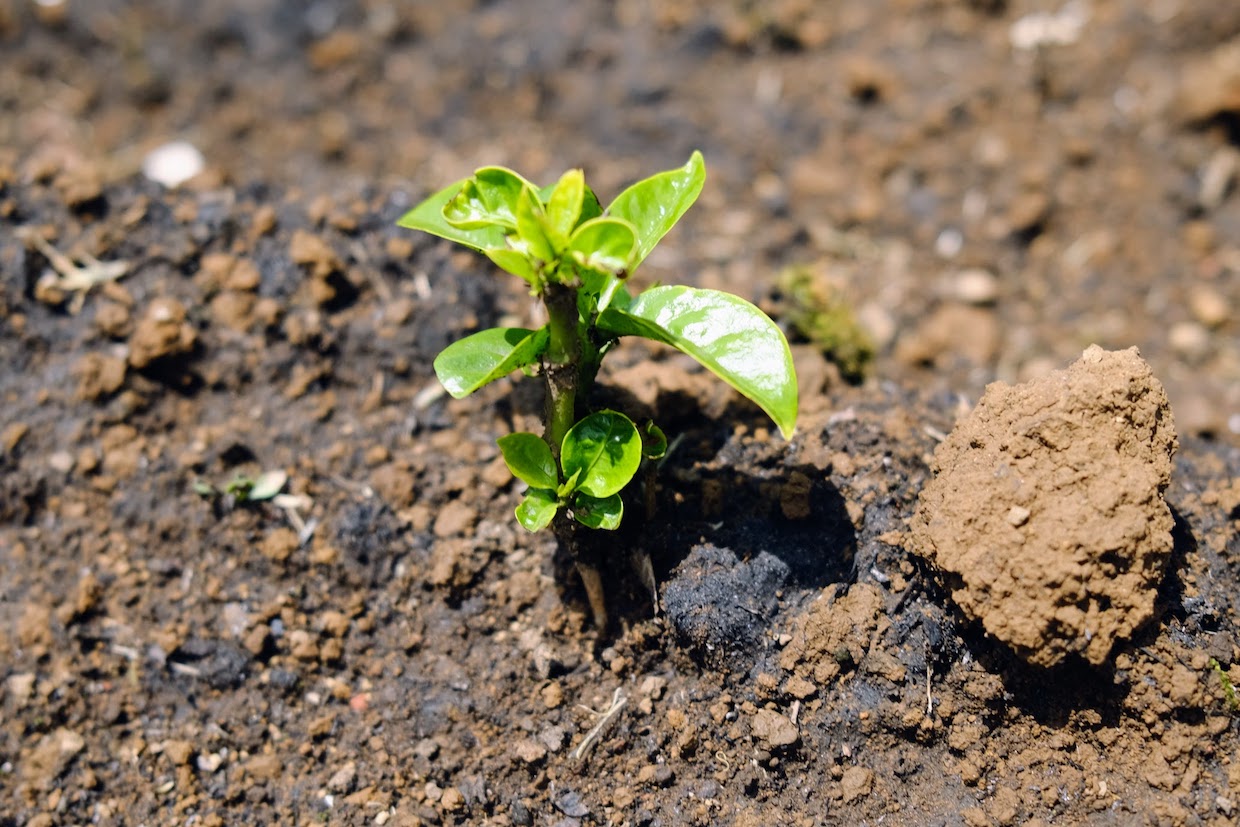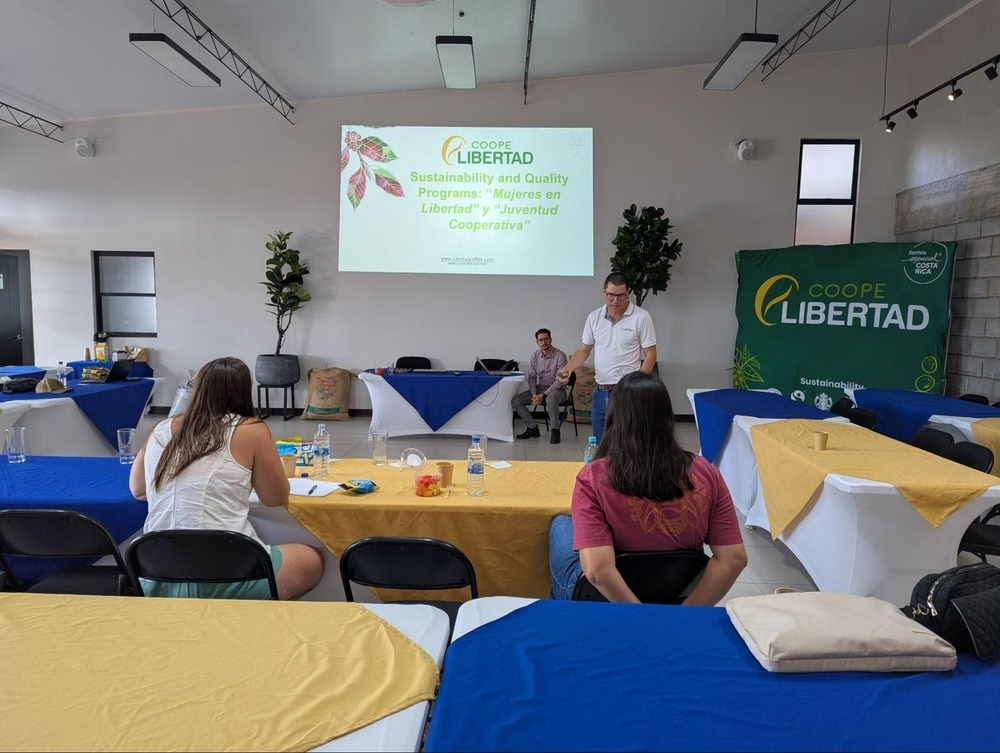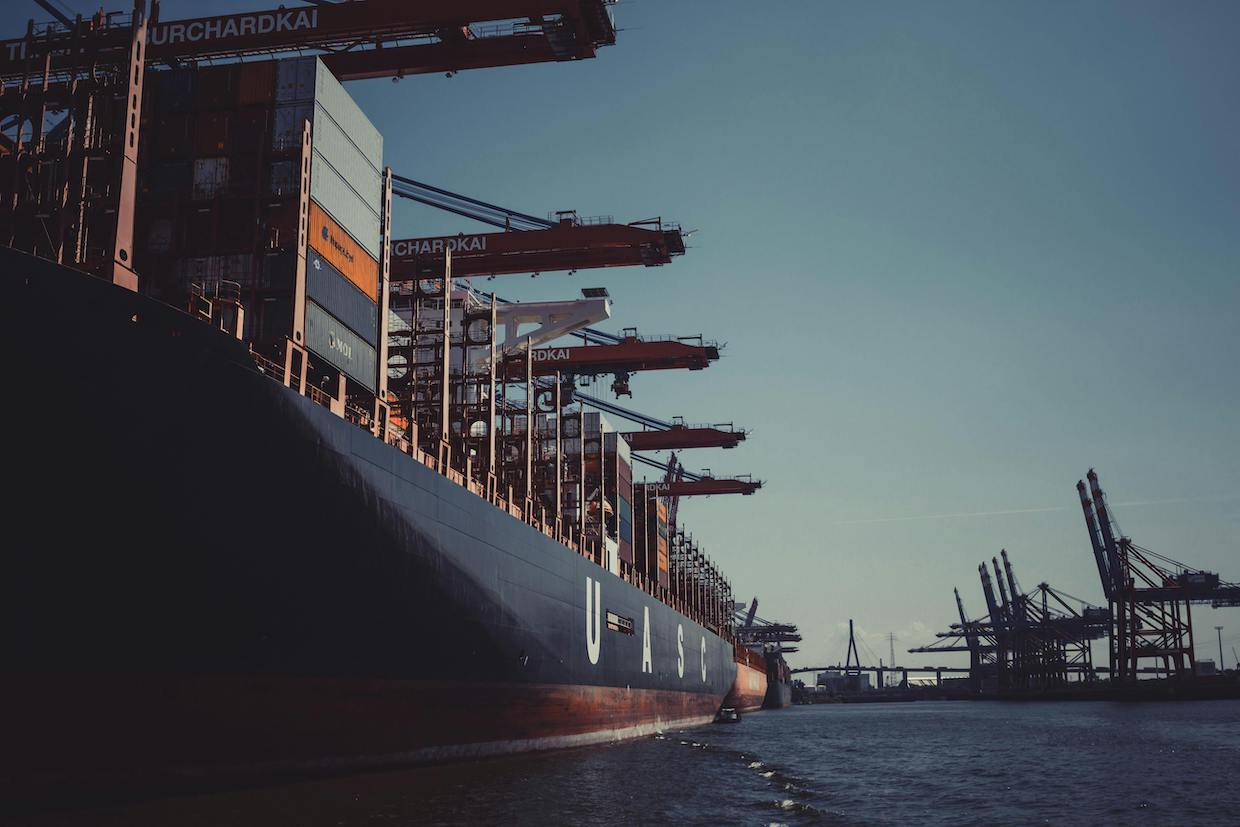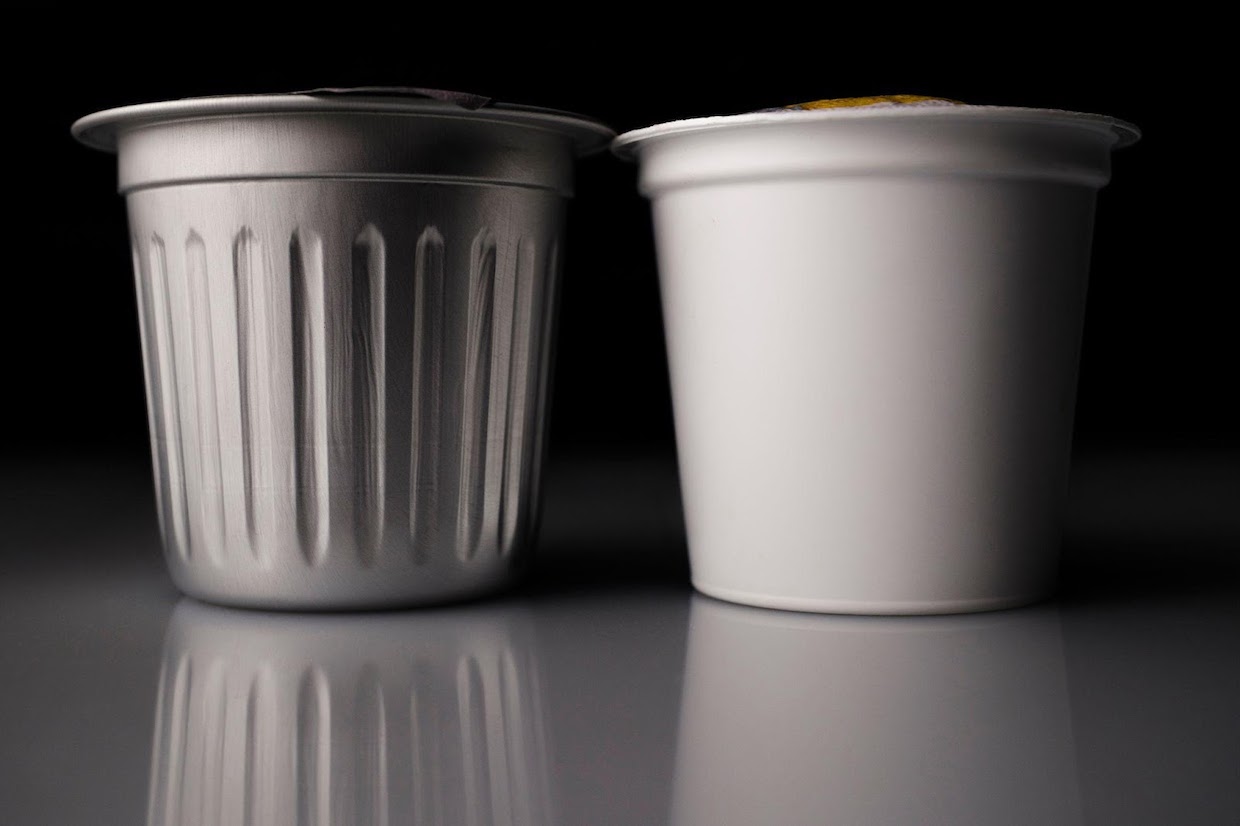
Cambio Roasters September 2024 press release photo. See the original here.
[Note: This story was originally published by Grist. Sign up for Grist’s weekly newsletter here.]
There’s a Keurig machine in some 40 million households in the U.S. Single-serve coffee brewing systems — which allow consumers to make just one cup of coffee at a time by feeding a pod into a slot and pressing a button — have soared in popularity since the early 2000s.
Inevitably, this leads to a lot of trash.
Every cup of java brewed creates a conundrum: what to do with the coffee pod that produced it. To start, can it be recycled? The answer, in Keurig’s case, is not really. The company’s single-use coffee pods — also known as K-cups — are made of polypropylene plastic, a material that experts warn is not as recyclable as consumers have been led to think. Two of the country’s largest recycling companies have said they do not accept K-cup pods, and one environmental group calculated that if you lined up all the K-cup pods in the world’s landfills side by side, they would comfortably circle the globe 10 times.
A new coffee pod company claims to have developed a solution to Keurig’s plastic waste problem. Cambio Roasters, which launched in September, offers a Keurig-compatible coffee pod that’s made out of aluminum — which, unlike plastic, is infinitely recyclable. Cambio is led by a team of former Keurig employees, including founder and CEO Kevin Hartley, who was previously a chief innovation officer at Keurig Green Mountain, as the company was formerly known. “This is, in our view, the most exciting innovation in coffee since the K-cup,” said Hartley during a launch-day press call for Cambio.
Experts, however, aren’t sure that Cambio understands just how big of a problem K-cups pose to curbside recycling systems.
“Really, plastic is just not a good option,” said Jeremy Pare, a visiting professor of business and environment at Duke University’s Nicholas School of the Environment. But even aluminum, with all its benefits, is “still going to have issues.”
Part of the difficulty of creating a truly recyclable packaging option — for just about any consumer good — is the severely fragmented nature of the American recycling landscape. “There are over 10,000 recycling systems in the U.S.,” said Pare, who is also a member of the Plastic Pollution Working Group at Duke’s Nicholas Institute for Energy, Environment, and Sustainability. “And yet, at the same time, only a quarter of the population has access to recycling in the U.S.” (Pare lives in one such community with no formal recycling program, just outside of Augusta, Maine.) In the U.S., the question of whether something is recyclable can only accurately be answered on a local level.
Another problem is the plastic composition of most K-cup pods. Sustainability concerns have followed the Keurig brand closely as it has scaled. (Once a small startup, Keurig was acquired by Green Mountain Coffee Roasters in 2006; in 2018, Keurig Green Mountain merged with Dr Pepper Snapple to become Keurig Dr Pepper.) Keurig started selling K-cups pods made of polypropylene in 2016, with the goal of making 100 percent of K-cup pods “recyclable” by 2020. But the company has run into trouble for touting recyclability. In 2018, a California resident sued Keurig for claiming that K-cup pods could be recycled after the foil lid was removed and the coffee grounds were rinsed or dumped out — which resulted in Keurig agreeing to pay $10 million in a class-action settlement. And in September of this year, the Securities and Exchange Commission charged Keurig for falsely claiming the pods “can be effectively recycled.” (Keurig settled the claim by agreeing to pay a $1.5 million penalty fee.)
Hartley, who left Keurig in 2017, knew consumers wanted a plastic-free K-cup option — and after years of prototypes and testing, he and his team settled on aluminum as an easier-to-recycle alternative. Aluminum is also impervious to oxygen, which causes coffee to lose its flavor over time. “Whenever we brew a cup of coffee, it tastes exactly as the roastmaster intended,” said Hartley.
Cambio isn’t the first single-serve coffee company to opt to ditch plastic or invest in circularity. Nespresso, a popular single-serve coffee company that’s owned by the Nestlé Group, has made its capsules out of aluminum for over 30 years. In 2020, Nespresso announced that its pods would be made of 80 percent recycled aluminum, and it claims its global recycling rate is 32 percent.
But Nespresso pods only work in Nespresso machines. Because Cambio coffee pods are designed to work with Keurig models, Hartley hopes to give consumers what they want “without having to buy a new brewer.”
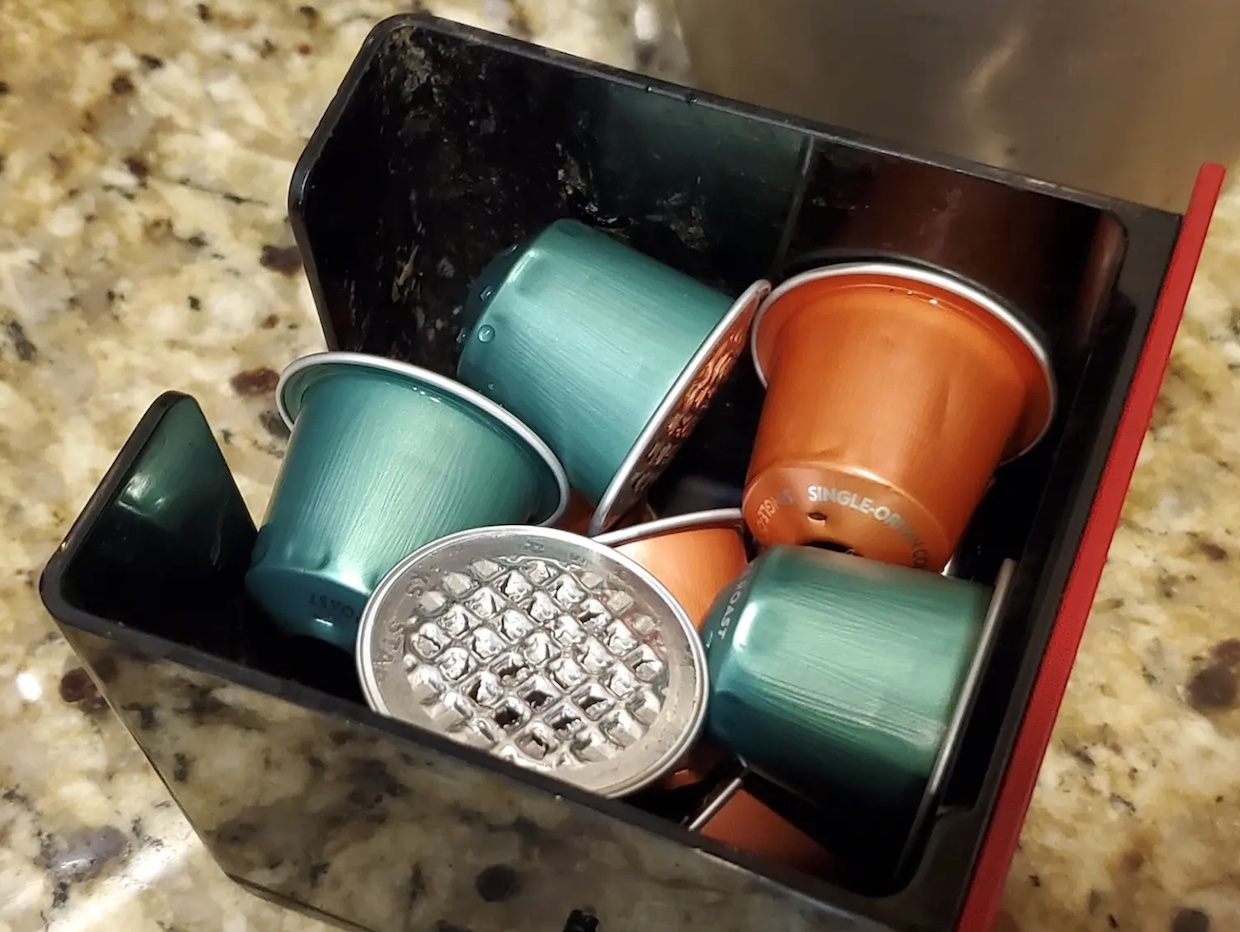
Nespresso instructs consumers to recycle their used coffee pods as is, grounds and all. Smith Collection / Gado / Getty Images. Courtesy of Grist.
Cambio also allows users to peel back the lid and dump out the grounds before recycling. Nespresso pod lids are difficult to remove, and the company instructs users to recycle their pods as is, grounds and all — but they’re only approved for curbside recycling in New York City and Jersey City, where a designated recycling contractor cleans them out before reprocessing them. (Nespresso consumers can also mail used pods back to the manufacturer for recycling, or drop them off at Nespresso stores.)
Unfortunately, swapping plastic for aluminum doesn’t automatically solve K-cup pods’ recyclability crisis, experts say. What really prevents coffee pods, regardless of what they’re made of, from having a second life is their size.
After collection, recyclables are sorted at a facility known as a materials recovery facility, or MRF. MRFs aren’t equipped to collect small items — a common rule of thumb is that they can’t handle anything smaller than a credit card — and so small objects placed in recycling bins often wind up getting sent to landfills. “The K-cups are so small that they fall through” the machinery in many recycling facilities, said Pare. “So other than separating” coffee pods from the waste stream “individually, there’s no good way to recycle them.”
Cambio’s approach to working around this is two-pronged. First, the company says it wants consumers to stack used K-cup pods together — and then pinch them closed — to overcome many recycling facilities’ size requirements. Three or more used K-cup pods should create a piece of aluminum large enough to fit through the machinery at recycling facilities, says Hartley. (These instructions don’t currently appear on Cambio’s packaging or website.)
Cambio says it is also developing a device that will make this stacking and pinching of used K-cups easier. “Think of this device as an easy way for consumers to bundle cups together and then toss into their recycling bin,” said Hartley. He added that the company has filed for patents for second-generation Cambio pods that can be “snapped” together after use.
Jan Dell, a chemical engineer and an environmental nonprofit founder, said, “I don’t think aluminum pods are a meaningful improvement,” citing their small size as a barrier to being accepted and sorted via curbside recycling systems. “Think of the pods like confetti: impossible to collect back up.”
Cambio disagreed with Dell’s characterization of the switch to aluminum, pointing out that currently, essentially no single-use plastic pods are recycled, whereas aluminum can be endlessly recycled. “To Cambio and consumers, these two facts are meaningful.” Hartley also shared that the work of ensuring Cambio’s compatibility with recycling programs across the country is “ongoing.” The company is planning to run tests with MRFs in specific markets “as soon as feasible.”
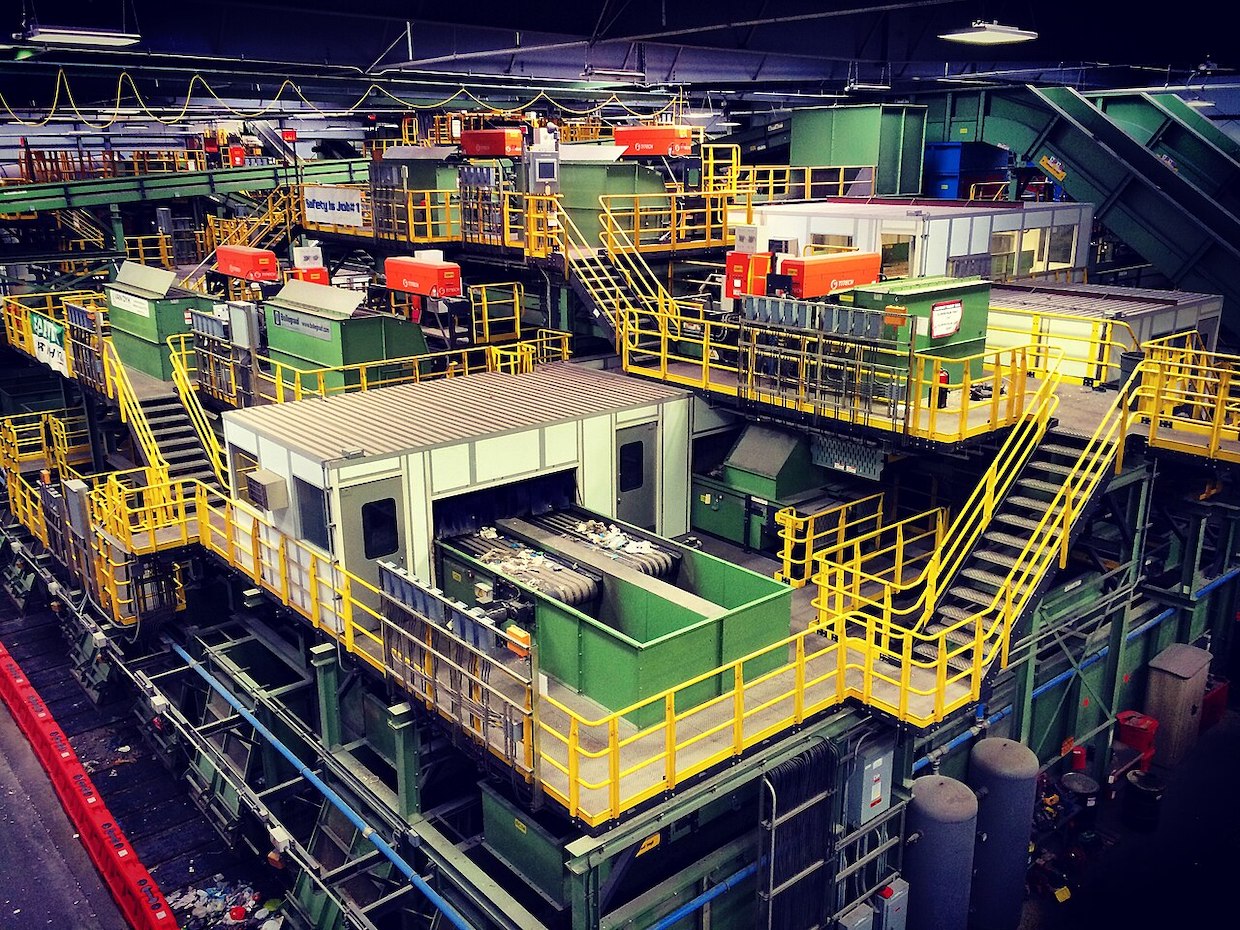
Main processing building at the Sunset Park Material Recovery Facility, Brooklyn, New York – 2015. Photo by JelloMistress, CC BY-SA 4.0.
In response to a request for comment, a spokesperson from Keurig Dr Pepper said, “We know our consumers want simplicity and less waste.” They shared that the company has “been lightweighting our pods to reduce the amount of plastic used,” as well as “increasing options for recycling them,” including a soon-to-be-launched program in which customers will be able to mail their used pods to Keurig for recycling. The spokesperson also said the company is “continually exploring” more “sustainable packaging” options.
Dell leads the nonprofit The Last Beach Cleanup, which is focused on fighting plastic pollution. The ultimate solution to Keurig’s plastic footprint, she said, is a product that eliminates “the need to collect anything back from customers,” like a fiber-based pod that can be composted along with the grounds.
Keurig is currently testing a plant-based pod format that won’t have any plastic or aluminum, and the company expects it to be certified compostable, according to the Keurig Dr Pepper spokesperson. Hartley said he worked on that product for many years, calling it “an amazing innovation.”
But these coffee pucks, which are not yet available for sale, will require an entirely new machine to run. “It’s going to take a long time before America is going to throw away 40 or 50 million brewers and buy 40 or 50 million new brewers,” said Hartley. He added, referring to his time with Keurig, “I won’t tell publicly how much money we spent to start from zero and have 50 million American households loving their Keurigs. But it’s a big lift, and it takes decades.”
In an interview with the Atlantic in 2015, the inventor of the K-cup said, “I feel bad sometimes that I ever did it.” As the market for single-serve coffee brewers grows, so will its impact on the environment, unless its products are somehow wildly reimagined and redesigned. Keurigs and Nespresso machines are marketed as both convenient and luxurious, a combination that is likely to keep drawing in new market segments.
But eco-conscious coffee brewers can rest easy in the knowledge that you don’t need a Keurig or Nespresso machine to brew one cup of coffee at a time; any coffee maker can be single-serve if you use only the water and coffee grounds you actually need. No pods required — maybe just a filter.
[Publisher’s Note: This article originally appeared in Grist at https://grist.org/food-and-agriculture/why-its-so-hard-to-create-a-truly-recyclable-keurig-coffee-pod/. Grist is a nonprofit, independent media organization dedicated to telling stories of climate solutions and a just future. Learn more at Grist.org]
Related Posts
Frida Garza, Grist
Frida Garza, Staff Writer, Grist







